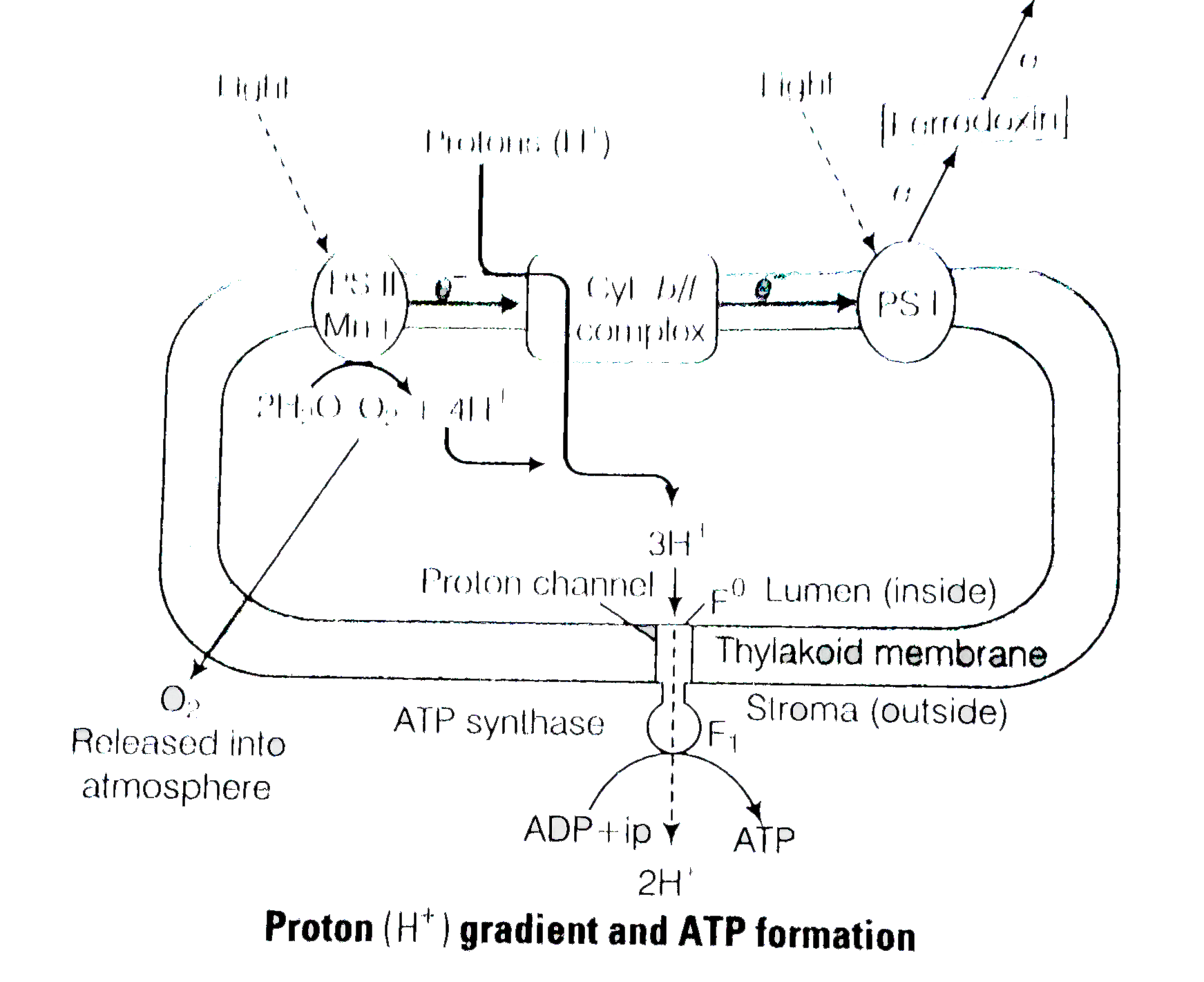Explain how during light reaction of photosynthesis, ATP synthesis is a chemiosmotic phenomenon.
Video Solution
Text Solution
In light reaction plants trap solar readiation by photosynthetic pigments which convert light energy into chemical energy. Main event of light reaction is photosphorylation, i.e., formation of ATP from ADP+Pi by using energy of excited electron movement through electron transport chain, present in thylakoid membrane.
Chemiosomosis is the movemet of ions across a selectively permeable membrane, down the electrochemical/proton gradient.
Chemiosomosis hypothesis of ATP formation was first proposed by Mitchell (1961) according to which the enzyme ATP synthase generates ATP via a membrane, proton pump and proton gradient. ATP synthase allows ions O2 protons to pass through membrane and proton pump.
This creales a high concentration of proton (H+) in the lumen and hence diffuses across the membrane to active ATPase, releasing ATP molecules. One molecule of ATP is released for every two (H+) ions passing Through ATPase.

|
Topper's Solved these Questions
- PHOTOSYNTHESIS IN HIGHER PLANTSBook:NCERT EXEMPLARChapter:PHOTOSYNTHESIS IN HIGHER PLANTSExercise:Long Answer type Question
Explore 13 Videos
- PHOTOSYNTHESIS IN HIGHER PLANTSBook:NCERT EXEMPLARChapter:PHOTOSYNTHESIS IN HIGHER PLANTSExercise:Very short answer type Questions
Explore 12 Videos
- NEURAL CONTROL AND CO-ORDINATIONBook:NCERT EXEMPLARChapter:NEURAL CONTROL AND CO-ORDINATIONExercise:LONG ANSWER TYPE QUESTIONS
Explore 3 Videos
- PLANT GROWTH AND DEVELOPMENT Book:NCERT EXEMPLARChapter:PLANT GROWTH AND DEVELOPMENT Exercise:Long Answer Type Question
Explore 3 Videos
Similar Questions
Knowledge Check
During dark reaction of photosynthesis
AWater splitBCO2 is reduced to organic comoundsCChlorophyll is activatedD6 carbon sugar is broken down into 3 carbon sugarIn the two light reactions of photosynthesis
APS I produces strong oxidant while PS II a strong reductantBPS I produces strong reductant NADPH while PS II a strong oxidantCPS I emits electrons for PS IIDPS I produces ATP which is not fonned by PS IIIn the two light reaction of photosynthesis
APS I produces strong oxidant while PS II a strong reductantBPS I produces strong reductant NADPH while PS II a strong oxidantCPS I emits electrons for PS IIDPS I produces ATP which is not formed
Light reaction of photosynthesis occurs inside
View SolutionIn light reaction for the synthesis of ATP, the site is
View SolutionThe products of light reaction of photosynthesis is
View SolutionLight reaction of photosynthesis is also called
View SolutionDuring photochemical reactions of photosynthesis
View Solution